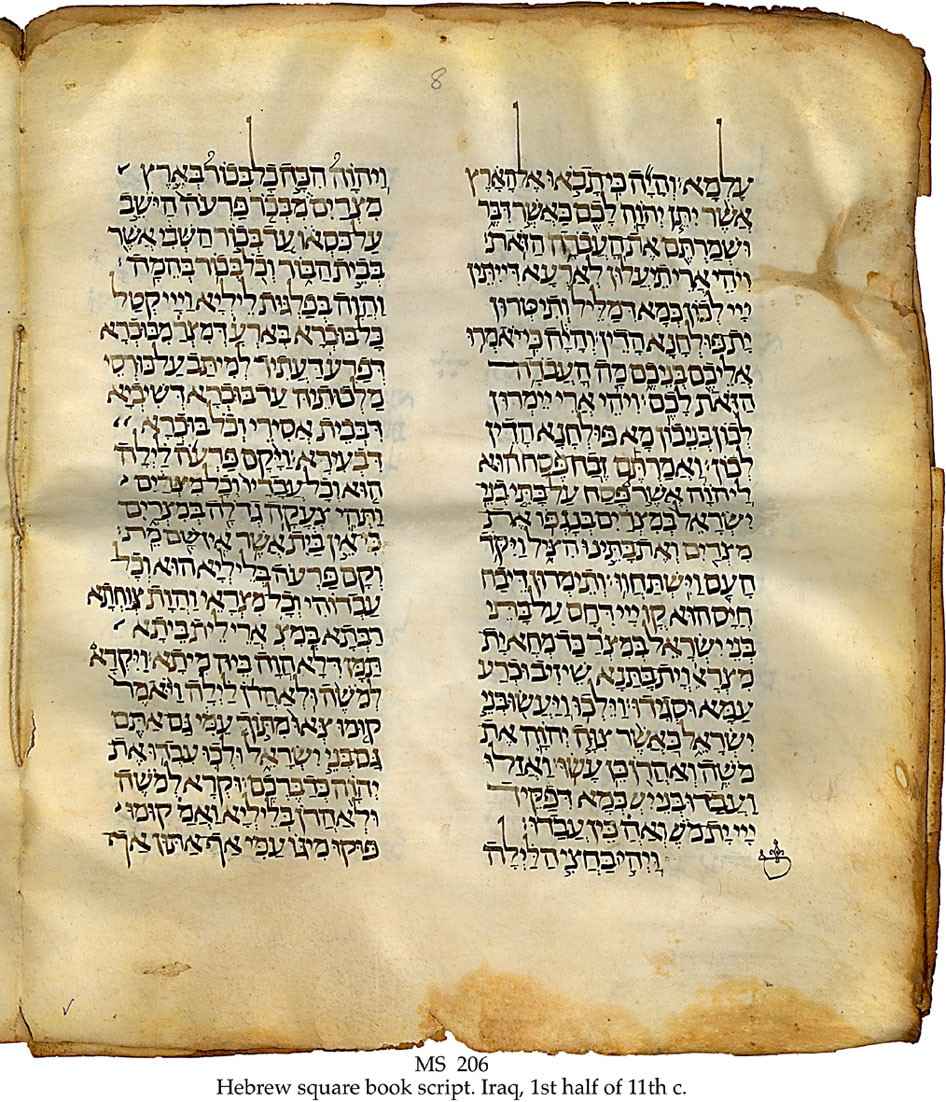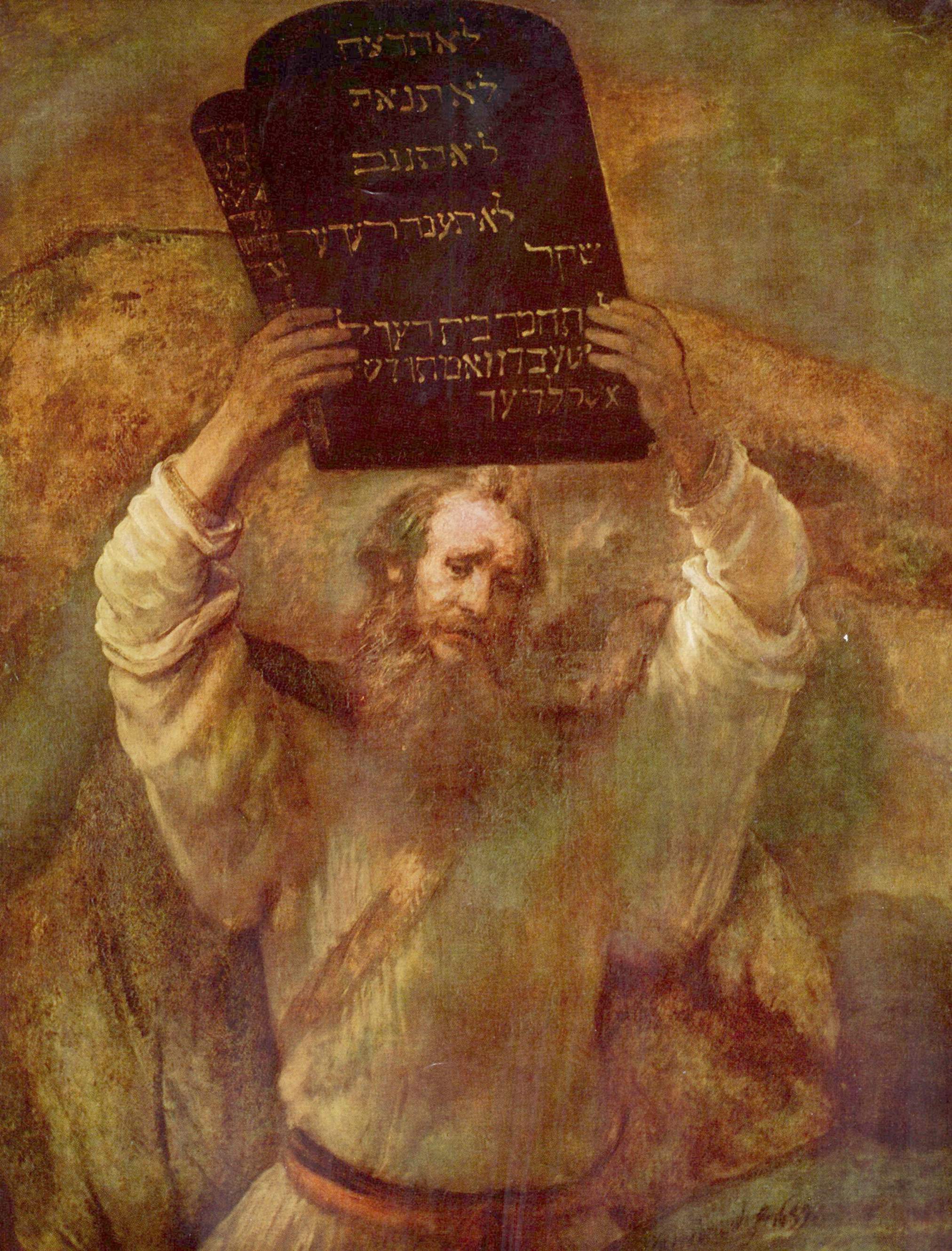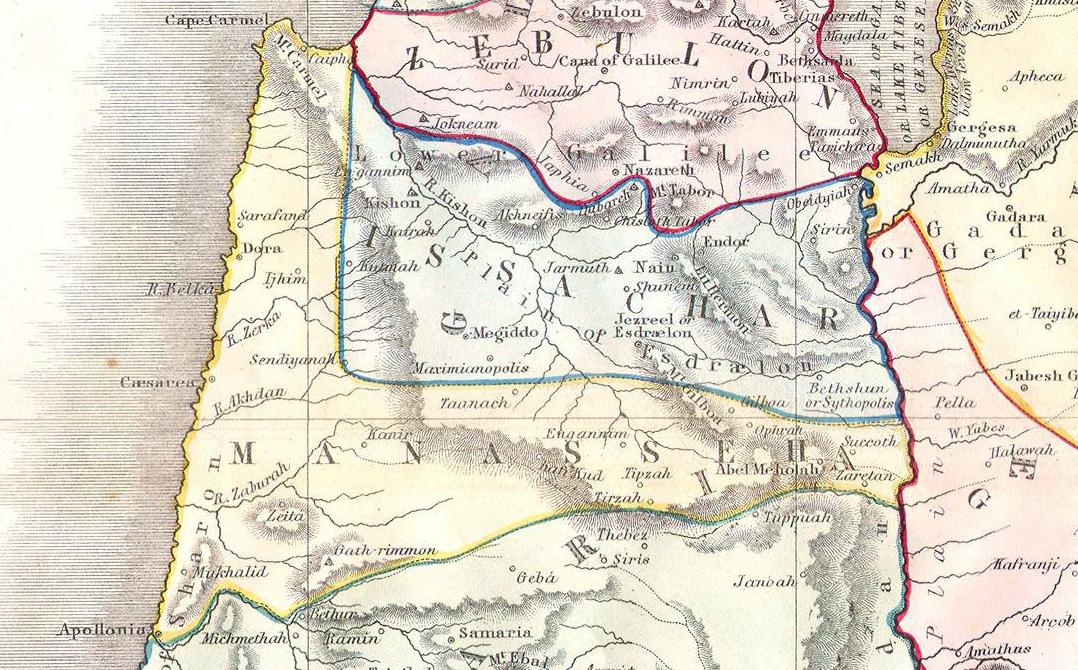|
Elohist
According to the documentary hypothesis, the Elohist (or simply E) is one of four source documents underlying the Torah, together with the Jahwist (or Yahwist), the Deuteronomist and the Priestly source. The Elohist is so named because of its repeated use of the word ''Elohim'' to refer to the Israelite God. The Elohist source is characterized by, among other things, an abstract view of God, using Horeb instead of Sinai for the mountain where Moses received the laws of Israel and the use of the phrase "fear of God". It habitually locates ancestral stories in the north, especially Ephraim, and the documentary hypothesis holds that it must have been composed in that region, possibly in the second half of the 9th century BCE. Because of its highly fragmentary nature, most scholars now question the existence of the Elohist source as a coherent independent document. Instead, the E material is viewed as consisting of various fragments of earlier narratives that are incorporated i ... [...More Info...] [...Related Items...] OR: [Wikipedia] [Google] [Baidu] |
Elohim
''Elohim'' ( ) is a Hebrew word meaning "gods" or "godhood". Although the word is plural in form, in the Hebrew Bible it most often takes singular verbal or pronominal agreement and refers to a single deity, particularly but not always the God of Judaism. In other verses it takes plural agreement and refers to gods in the plural. Morphologically, the word is the plural form of the word () and related to '' el''. It is cognate to the word ''ʾl-h-m'' which is found in Ugaritic, where it is used as the pantheon for Canaanite gods, the children of El, and conventionally vocalized as "Elohim". Most uses of the term ''Elohim'' in the later Hebrew text imply a view that is at least monolatrist at the time of writing, and such usage (in the singular), as a proper title for Deity, is distinct from generic usage as ''elohim'', "gods" (plural, simple noun). Rabbinic scholar Maimonides wrote that ''Elohim'' "Divinity" and ''elohim'' "gods" are commonly understood to be homonym ... [...More Info...] [...Related Items...] OR: [Wikipedia] [Google] [Baidu] |
Documentary Hypothesis
The documentary hypothesis (DH) is one of the models used by biblical scholars to explain the origins and composition of the Torah (or Pentateuch, the first five books of the Bible: Book of Genesis, Genesis, Book of Exodus, Exodus, Leviticus, Book of Numbers, Numbers, and Deuteronomy). A version of the documentary hypothesis, frequently identified with the German scholar Julius Wellhausen, was almost universally accepted for most of the 20th century. It posited that the Pentateuch is a compilation of four originally independent documents: the Jahwist, Elohist, Deuteronomist, and Priestly source, Priestly sources, frequently referred to by their initials.hence the alternative name ''JEDP'' for the documentary hypothesis The first of these, J, was dated to the Solomon, Solomonic period (c. 950 BCE). E was dated somewhat later, in the 9th century BCE, and D was dated just before the reign of Josiah, King Josiah, in the 7th or 8th century BCE. Finally, P was generally dated to the tim ... [...More Info...] [...Related Items...] OR: [Wikipedia] [Google] [Baidu] |
Jahwist
The Jahwist, or Yahwist, often abbreviated J, is one of the most widely recognized sources of the Pentateuch (Torah), together with the Deuteronomist, the Priestly source and the Elohist. The existence of the Jahwist text is somewhat controversial, with a number of scholars, especially in Europe, denying that it ever existed as a coherent independent document. Nevertheless, many scholars do assume its existence. The Jahwist is so named because of its characteristic use of the term Yahweh ( German: ''Jahwe''; Hebrew: ; English: ''Jehovah'') for God. Background Modern scholars agree that separate sources underlie the Pentateuch, but there is much disagreement on how these sources were used by the authors to write the first five books of the Bible. The documentary hypothesis, that priestly editors wove several independent source narratives into the single text of the Pentateuch, dominated much of the 20th century, but the consensus surrounding this hypothesis has now broken down. ... [...More Info...] [...Related Items...] OR: [Wikipedia] [Google] [Baidu] |
Priestly Source
The Priestly source (or simply P) is perhaps the most widely recognized of the sources underlying the Torah, both stylistically and theologically distinct from other material in it. It is considered by most scholars as the latest of all sources, and “meant to be a kind of redactional layer to hold the entirety of the Pentateuch together,” It includes a set of claims that are contradicted by non-Priestly passages and therefore uniquely characteristic: no sacrifice before the institution is ordained by Yahweh (God) at Sinai, the exalted status of Aaron and the priesthood, and the use of the divine title El Shaddai before God reveals his name to Moses, to name a few. In general, the Priestly work is concerned with priestly matters – ritual law, the origins of shrines and rituals, and genealogies – all expressed in a formal, repetitive style. It stresses the rules and rituals of worship, and the crucial role of priests, expanding considerably on the role given to Aaron (all ... [...More Info...] [...Related Items...] OR: [Wikipedia] [Google] [Baidu] |
Burning Bush
The burning bush (or the unburnt bush) refers to an event recorded in the Jewish Torah (as also in the biblical Old Testament and Islamic scripture). It is described in the third chapter of the Book of Exodus as having occurred on Mount Horeb. According to the biblical account, the bush was on fire but was not consumed by the flames, hence the name. In the biblical and Quranic narrative, the burning bush is the location at which Moses was appointed by God to lead the Israelites out of Egypt and into Canaan. The Hebrew word in the narrative that is translated into English as ''bush'' is ''seneh'' (), which refers in particular to brambles;''Peake's commentary on the Bible'' ''seneh'' is a ''hapax legomenon, dis legomenon'', only appearing in two places, both of which describe the burning bush. The use of ''seneh'' may be a deliberate pun on ''Sinai'' (), a feature common in Hebrew texts. Biblical narrative In the narrative, an angel of the Lord is described as appearing "in a ... [...More Info...] [...Related Items...] OR: [Wikipedia] [Google] [Baidu] |
El (deity)
El is a Northwest Semitic word meaning 'god' or 'deity', or referring (as a proper name) to any one of multiple major ancient Near Eastern deities. A rarer form, ''ila'', represents the predicate form in the Old Akkadian and Amorite languages. The word is derived from the Proto-Semitic *ʔil-. Originally a Canaanite deity known as ''El'', ''Al'' or ''Il'' the supreme god of the ancient Canaanite religion and the supreme god of East Semitic speakers in Early Dynastic Period of Mesopotamia. Among the Hittites, El was known as Elkunirša ( ). Although El gained different appearances and meanings in different languages over time, it continues to exist as ''El-'', ''-il'' or ''-el'' in compound proper noun phrases such as Elizabeth, Ishmael, Israel, Samuel, Daniel, Michael, Gabriel (Arabic: Jibra'il), and Bethel. Linguistic forms and meanings Cognate forms of El are found throughout the Semitic languages. They include Ugaritic , pl. ; Phoenician pl. ; Hebrew , pl. ... [...More Info...] [...Related Items...] OR: [Wikipedia] [Google] [Baidu] |
Torah
The Torah ( , "Instruction", "Teaching" or "Law") is the compilation of the first five books of the Hebrew Bible, namely the books of Genesis, Exodus, Leviticus, Numbers and Deuteronomy. The Torah is also known as the Pentateuch () or the Five Books of Moses. In Rabbinical Jewish tradition it is also known as the Written Torah (, ). If meant for liturgic purposes, it takes the form of a Torah scroll ( '' Sefer Torah''). If in bound book form, it is called '' Chumash'', and is usually printed with the rabbinic commentaries (). In rabbinic literature, the word ''Torah'' denotes both the five books ( "Torah that is written") and the Oral Torah (, "Torah that is spoken"). It has also been used, however, to designate the entire Hebrew Bible. The Oral Torah consists of interpretations and amplifications which according to rabbinic tradition have been handed down from generation to generation and are now embodied in the Talmud and Midrash. Rabbinic tradition's underst ... [...More Info...] [...Related Items...] OR: [Wikipedia] [Google] [Baidu] |
Mount Horeb
Mount Horeb (; Hebrew: ''Har Ḥōrēḇ''; Greek in the Septuagint: , ''Chōrēb''; Latin in the Vulgate: ') is the mountain at which the Ten Commandments were given to Moses by God, according to the Book of Deuteronomy in the Hebrew Bible. It is described in two places (the Book of Exodus and the Books of Kings) as the "Mountain of Elohim". The mountain is also called the Mountain of YHWH. In other biblical passages, these events are described as having transpired at Mount Sinai. Although most scholars consider Sinai and Horeb to have been different names for the same place, there is a minority body of opinion that they may have been different locations. The Protestant reformer John Calvin took the view that Sinai and Horeb were the same mountain, with the eastern side of the mountain being called Sinai and the western side being called Horeb. Abraham Ibn Ezra suggested that there was one mountain, "only it had two tops, which bore these different names". Locally, around ... [...More Info...] [...Related Items...] OR: [Wikipedia] [Google] [Baidu] |
Mount Sinai (Bible)
Mount Sinai (, ''Har Sīnay'') is the mountain at which the Ten Commandments were given to the Prophets in Judaism, Hebrew prophet Moses by God in Judaism, God, according to the Book of Exodus in the Hebrew Bible/Old Testament. In the Book of Deuteronomy, these events are described as having transpired at Mount Horeb. "Sinai" and "Horeb" are generally considered by Biblical studies, biblical scholars to refer to the same place. Mount Sinai is considered one of the most sacred locations by the three major Abrahamic religions: Judaism, Christianity, and Islam. The exact geographical position of Mount Sinai described in the Hebrew Bible remains disputed. The high point of the dispute was in the mid-19th century. Biblical texts describe the theophany at Mount Sinai, in terms which a minority of scholars, following Charles Beke (1873), have suggested may literally describe the mountain as a volcano. Biblical description The biblical account of the giving of the instructions and ... [...More Info...] [...Related Items...] OR: [Wikipedia] [Google] [Baidu] |
Tribe Of Manasseh
According to the Hebrew Bible, the Tribe of Manasseh (; Hebrew: ''Ševet Mənašše,'' Tiberian: ''Šēḇeṭ Mănašše'') was one of the twelve tribes of Israel. After the catastrophic Assyrian invasion of 720 BCE, it is counted as one of the ten lost tribes. Together with the Tribe of Ephraim, Manasseh also formed the House of Joseph. Symbols Their banner is a black flag with an embroidered unicorn. Biblical narrative According to the Tanakh, the Tribe of Manasseh was a part of a loose confederation of Israelite tribes from after the conquest of the land by Joshua until the formation of the first Kingdom of Israel in c. 1050 BC. No central government existed, and in times of crisis the people were led by ad hoc leaders known as Judges (see Book of Judges). With the growth of the threat from Philistine incursions, the Israelite tribes decided to form a strong centralised monarchy to meet the challenge, and the Tribe of Manasseh joined the new kingdom with Saul as t ... [...More Info...] [...Related Items...] OR: [Wikipedia] [Google] [Baidu] |
Modern Document Hypothesis
Modern may refer to: History *Modern history ** Early Modern period ** Modern age, Late Modern period *** 18th century *** 19th century *** 20th century ** Contemporary history * Moderns, a faction of Freemasonry that existed in the 18th century Philosophy and sociology * Modernity, a loosely defined concept delineating a number of societal, economic and ideological features that contrast with "pre-modern" times or societies ** Late modernity Art * Modernism ** Modernist poetry * Modern art, a form of art * Modern dance, a dance form developed in the early 20th century * Modern architecture, a broad movement and period in architectural history ** Moderne, multiple architectural styles ** Modernisme a.k.a. Catalan Modernism * Modern music (other) Geography *Modra, a Slovak city, referred to in the German language as "Modern" Typography * Modern (typeface), a raster font packaged with Windows XP * Another name for the typeface classification known as Didone (typography) ... [...More Info...] [...Related Items...] OR: [Wikipedia] [Google] [Baidu] |
Tribe Of Issachar
According to the Hebrew Bible, the Tribe of Issachar () was one of the twelve tribes of Israel and one of the ten lost tribes. In Jewish tradition, the descendants of Issachar were seen as being dominated by religious scholars and influential in proselytism. The sons of Issachar, ancestors of the tribe, were Tola, Phuvah, Job and Shimron. Biblical narrative In the biblical narrative of the Book of Joshua, following the completion of the conquest of Canaan by the Israelite tribes, Joshua allocated the land among the twelve tribes. The territory allocated to Issachar stretched from the Jordan River in the east to Mount Carmel on the west, near to the Mediterranean coast, including the fertile Esdraelon plain between present-day Lower Galilee and Samaria. It was bounded on the east by East Manasseh, the south by West Manasseh, and the north by Zebulun and Naphtali. There is a consensus among scholars that the accounts in the Book of Judges are not historically reliable. Alternat ... [...More Info...] [...Related Items...] OR: [Wikipedia] [Google] [Baidu] |







